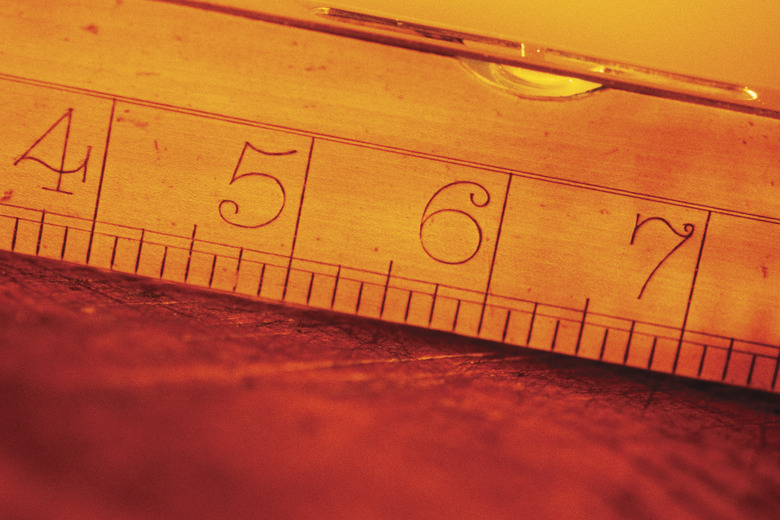How To Calculate The Volume Of A Conical Paper Cup
Have you ever wondered how much water or coffee can fit into one of those seemingly innumerable plastic disposable water cups, the kind that is narrower at the base than at the top? In other words, almost every paper, plastic or other disposable cup you have ever seen or used? (To be fair, some cups do not have sloping sides and are thus cylindrical, but this only seems to apply to permanent cups.)
The type of shape described above is based on a cone, which is the result of a line sweeping through space and tracing out a curved path such as a circle (in the simplest case) or an ellipse. A cup isn't usually pointed (some that hold frozen treats are), but it's still a "piece" of a cone, geometrically speaking. That makes it easy, with patience, to find the volume.
The Volume of a Cone
The formula for the volume of a regular, or right, cone (that is, one with a circular base) is
\(V=\frac{1}{3}πr^2h\)
Where r is the radius of the base and h is the height of the cone. Also, since from the side, a right cone looks like two right triangles placed together, the length s of the sloping side of the cone has the same value as the hypotenuse of one of these triangles. It is thus given by applying the Pythagorean theorem: r2 + h2 = s2, so
\(s=\sqrt{r^2 + h^2}\)
The Volume of a Tapered Cup: Part One
Say you have a cup that is 8 centimeters (cm) wide at the base, 10 cm across at the top, and 15 cm tall. How much liquid can it hold in cm3, also called milliliters (mL)?
One way to approach this problem is to draw a cross-section of the cup, that is, what is looks like from the side after being cut exactly in half perpendicular to your field of view. If you draw vertical lines upward from the two points where the base meets the sides to the top of the cup, you have now split the cross-section into two equal, reflected right triangles and a rectangle. The triangles have long "legs" of 15 cm and short "legs" of 1 cm (splitting the difference between the base width and top width).
The Volume of a Tapered Cup: Part Two
Note what happens if you extend the sides of the cup in your diagram down to a point below the base. Also extend a line up from the center of the top toward the point these lines converge toward. (You may not have room to make the sides meet and form a closed triangle, but get as close as you can,)
Because of the principle of similar triangles, you know that the ratio of the long leg of the triangles from above (15 cm) to that of the small leg (1 cm) or 15 to 1, must be the same as the ratio of the small leg to the long leg of one the newly created triangles between the base of the "cup" and the point. Since the small leg has a value of 4 cm, the long leg must be 15 times this, or 60 cm.
Thus you are now dealing with the cross-section of a cone with a total height of 15 + 60 = 75 cm and a width of 10 cm, meaning a radius of 5 cm. The volume of this cone minus the volume of the cone extending up to the base of the cup, which has a height of 60 cm and a width of 8 cm (r = 4 cm) gives the desired result:
\(\begin{aligned}
\frac{1}{3}×π×5^2×75 = 1963.5 \text{ mL}\)
\(\frac{1}{3}×π×4^2×60 = 1005.3 \text{ mL}\)
\(1963.5 – 1005.3 = 958.2 \text{ mL}
\end{aligned}\)
Thus your cup holds very close to 1 L (1,000 mL) of liquid.
Cone and Cup Volume Calculator
See the Resources for a list of calculators involving cones given different initial combinations of information. Alternatively, you can use an approach like that above and split the cup up into different shapes, then use simpler formulae (such as the formula for the volume of a cube) in appropriate combinations to find the total volume.
Cite This Article
MLA
Beck, Kevin. "How To Calculate The Volume Of A Conical Paper Cup" sciencing.com, https://www.sciencing.com/calculate-volume-conical-paper-cup-5848042/. 6 December 2019.
APA
Beck, Kevin. (2019, December 6). How To Calculate The Volume Of A Conical Paper Cup. sciencing.com. Retrieved from https://www.sciencing.com/calculate-volume-conical-paper-cup-5848042/
Chicago
Beck, Kevin. How To Calculate The Volume Of A Conical Paper Cup last modified March 24, 2022. https://www.sciencing.com/calculate-volume-conical-paper-cup-5848042/
